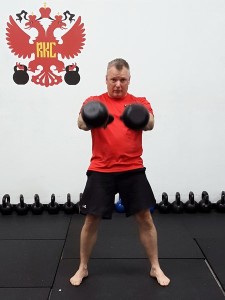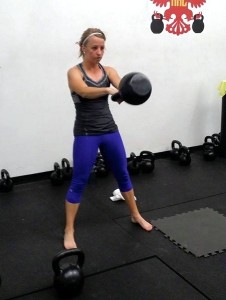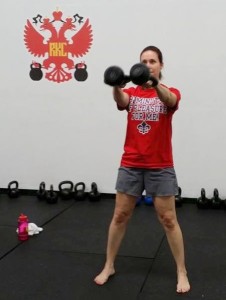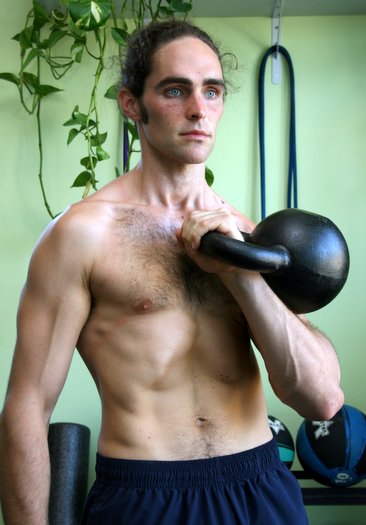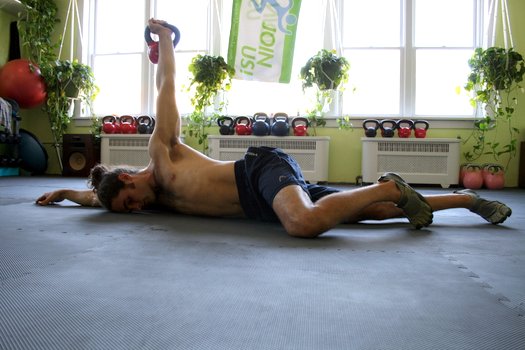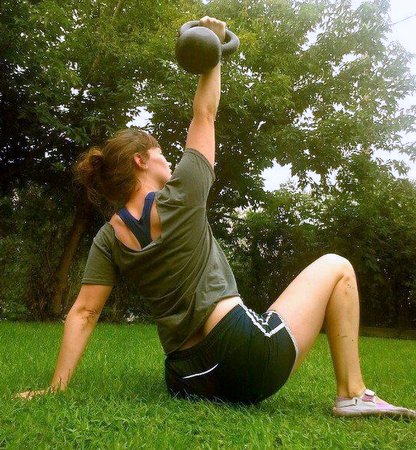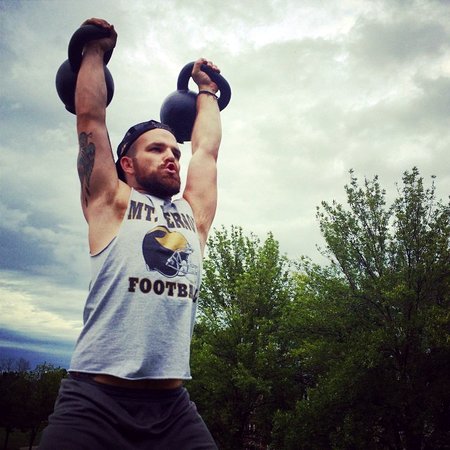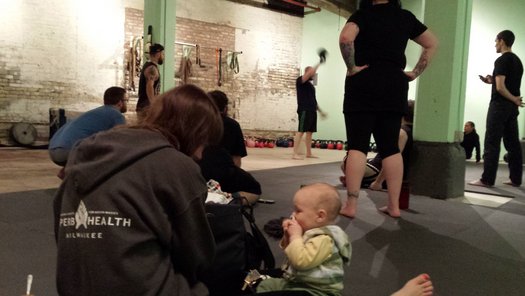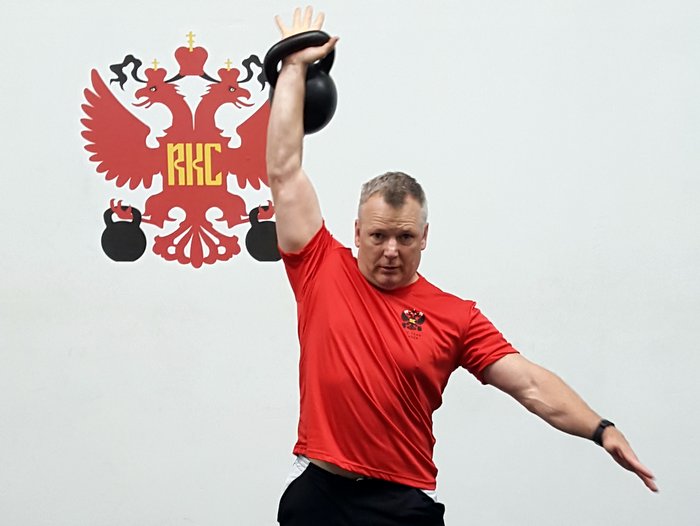
Nothing seems to scare potential RKC Instructors more than the 5 Minute Snatch Test (read complete testing requirements here), the gatekeeper of the system. In the long run, it’s only 5 minutes out of 23 hours of training—just 0.36% of the weekend. Sometimes I think the fear comes from a lack of confidence in their preparation, even though I have found that many people over-train for the snatch test. They snatch almost daily for tons of reps for long periods of time. In my opinion, a less is more approach works better. My last snatch test was my easiest one to date, and I only trained an average of 5 minutes a day for the test.
If you break down the kettlebell snatch, it’s a swing that ends up at the top position of the press. My plan was to work the swing and the press to train for the snatch test. It works if you look at the small space you must travel between the two exercises. The swing comes to chest height, and the press begins just a little bit higher. There’s only a small space missing when performing the snatch.
In my opinion, if you cannot handle heavy weight overhead, it’s not smart to ballistically propel the weight into position at the top of the snatch movement. So, my students work on heavy presses—snatch weight or heavier. Since this is RKC prep, this approach knocks out two birds at once.
When it comes to swings, I mix it up a little. I believe in having a great hip extension to launch the kettlebell and use the “float” as rest—with swings and as much as you can during the snatch test. That explosive hip extension also makes snatching easier as there is no pulling or fighting the bell on the way up. You can generate the float and guide the bell into position. That power can be developed with heavy double swings to chest height. This is typically the longest training session because we like to get a little more rest between sets when working on power and explosiveness. We will typically perform 10 reps on the minute, every minute, for 10 minutes. This usually gives us about 45 seconds of rest each set. If I feel like I’m losing some of the pop or if form deteriorates, we will occasionally just perform a set of swings and wait one minute.
On some days, we will see how many swings we can do in a 5 minute set of one-arm swings. A starting goal is to hit 100 swings. After a student can do 100 in five minutes, they will work up to as many as possible in that time frame. We have had a couple of students perform 160 swings in 5 minutes. On other training days, the students will grab a medium weight kettlebell for two-hand swings—somewhere between their one hand and two-and swing weights—and perform 100 two-hand swings in a 5 minute set. This helps bridge the gap between endurance and power.
We do the snatch test about every two weeks. And it is the only training for that day, they don’t get to work anything else other than recovery and mobility.
Typically the first time they hit 100 snatches, they knock it out in less than 4 minutes. They are typically spent and take a while to recover, but once they know that they can do it, we work on strategy and timing. If you finish the test in 3:30 minutes or 4:59 minutes, you still pass. I like to take my time and have something left at the end. We typically train for 10 left and 10 right on the minute for the test, but find that some students like the 20, 15, 10 and 5 rep scheme to pass. Once you can pass the test, the rep strategy comes down to personal preference and finding what works best for you.
The following training template focuses on the swing and snatch, I did not include the rest of the skills, but they can fit into the training plan if they’re thought of as a skill to practice. Use appropriate weights and make sure that the technique is good. There is no need to really push it for an extended length of time. Remember that this is only a small part of your RKC Workshop weekend. Do not dread it so much that you miss the awesomeness of the entire experience.
Monday
- 5 Minutes of 2 hand swings
- 5 x 5 pressing
Tuesday
- 10×10 heavy double kettlebell swings
- 5 x 5 double kettlebell squats
Thursday
- 5 minutes of snatch weight one-arm kettlebell swings
- 3 x 5 presses each side
Friday
- Light to medium one-arm swings for 10×10 (30 seconds on / 30 seconds off works well)
- 5 Get-ups left and right
Saturday
- Snatch test
